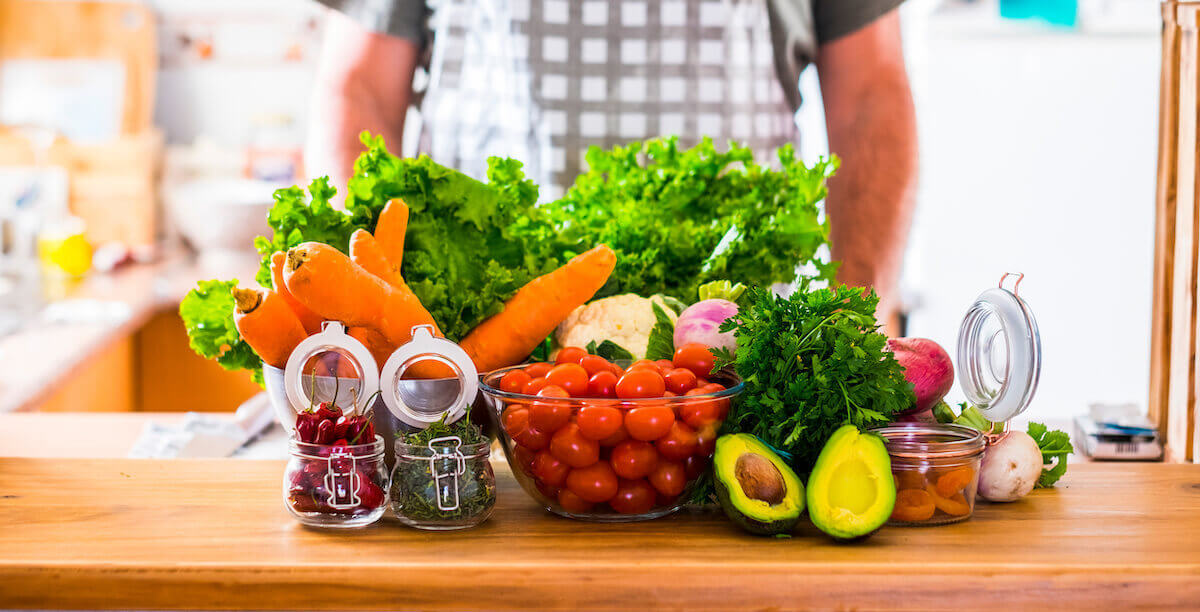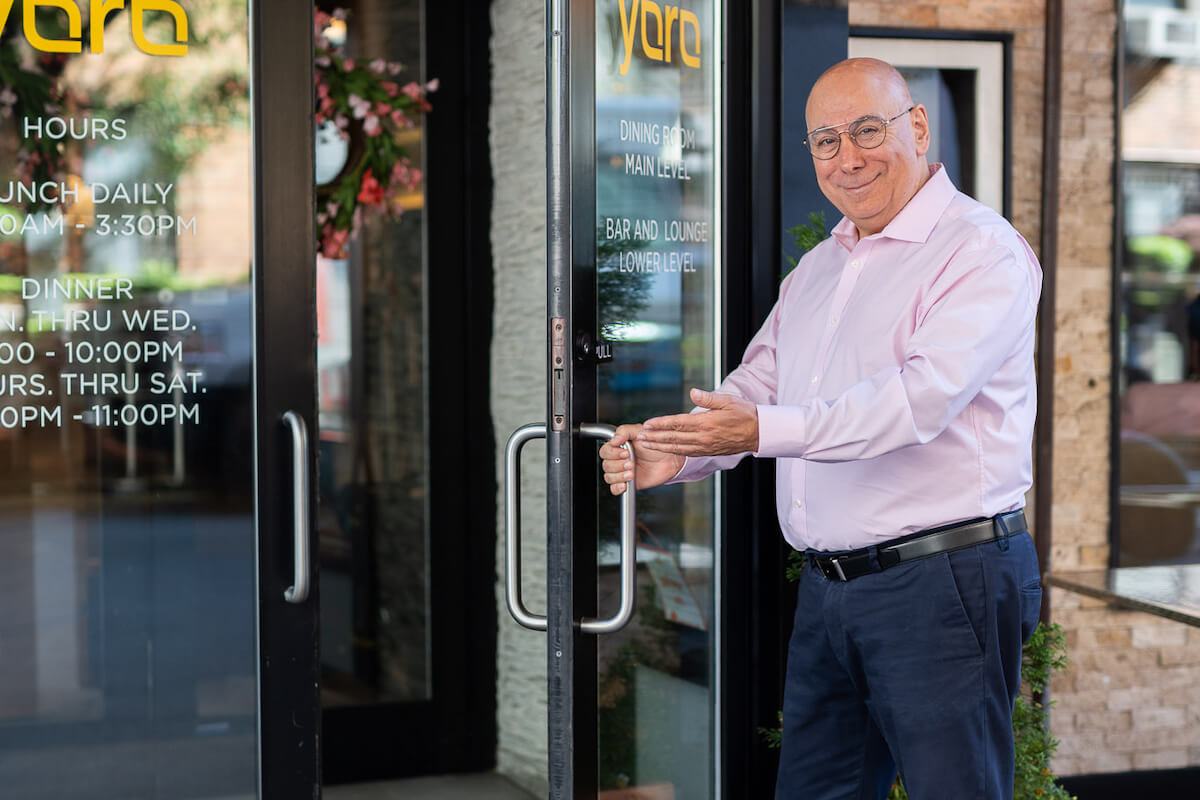10 restaurant sustainability tips you can use right away
By embracing sustainable practices and reducing your restaurant’s carbon footprint, you can improve your business’s image and increase team morale. It’s also an opportunity for restaurateurs to reach a new demographic and entice existing customers once again. New staff may feel more motivated to join the restaurant industry, too, knowing that sustainable practices are taking place. And hey, being a more sustainable restaurant has its own intangible perks: Knowing you’re doing the right thing can give you some extra motivation to dive into your work.
This article will cover what being a sustainable restaurant means and how it can benefit your business. We’ll also take a look at what you can do to improve your restaurant sustainability without eating into your own margins.
What is a sustainable restaurant?

Sustainability isn’t something you can just pay for and voilà! You’re now a sustainable restaurant. Rather, it’s an eco-friendly mindset in which you strive to constantly improve. You should regularly check your environmental impact and make changes to keep up with current sustainability initiatives.
Sustainability is a broad word, so let’s keep it simple. There are four pillars of sustainability:
- Environmental sustainability focuses on meeting the current population’s needs without spoiling the planet for future generations. We must think about the short-term and long-term effects of our food production process.
- Economic sustainability is about improving our standards of living and reducing environmental damage without breaking the bank.
- Social sustainability means focusing on ensuring equality while you make social improvements like ensuring non-discriminatory hiring practices.
- Human sustainability is simply the human side of things: health, education, nutrition, and so on. People who are well-fed, healthy, and educated are able to think long term, which is crucial for practical sustainable growth.
Covering every pillar of sustainability is a difficult task. Generally, customers are focused on environmental sustainability, but covering all four pillars will serve your restaurant and community better, and you’ll soon notice that making changes in one pillar may create positive changes in another.
Why should you care?

Even making simple changes in your restaurant like sourcing your food from local farms or finding ways to minimize food waste can make a huge difference. You may surprise yourself to find that sometimes making more sustainable management decisions can actually lower your running costs.
You may also get a sense of ethical satisfaction from sustainable practices—small decisions in your restaurant can create a positive impact in your community and around the world. Becoming a green restaurant also gives you an excuse to mix things up. You can make changes to menu items to incorporate local or seasonal ingredients, and you can even commit to a full rebrand.
The younger generations are growing up in a world that’s more conscious of environmental issues. News stories about greenhouse gas emissions are commonplace, more companies are claiming to be zero waste, and vegan options are practically everywhere. It’s safe to say that sustainability is currently trending, and a new menu full of dishes that cite where your ingredients come from will make your restaurant more attractive to a younger demographic of diners.
The restaurant industry can certainly do its part to work towards a more energy-efficient and waste-reducing future. Currently, the restaurant industry represents anywhere from 21-37% of global emissions as well as 78% of all disposable packaging, including plastic cutlery. That’s a lot! But restaurants can do a lot to reduce their impact on the environment while boosting both their image and their ethical practices.
10 ways to become a more sustainable restaurant

Sustainability is more than just an attractive and modern image for you to broadcast. It’s an ethos that restaurant owners can embrace by implementing a few simple restaurant sustainability practices. Here are simple changes that restaurant operators can make to begin the journey toward sustainable food service.
1. Use seasonal produce
A fun and effective way to make your restaurant more sustainable is to focus on produce available in season. Making your menu items seasonal will give your diners more dynamic choices, which could keep them coming back to see what’s changed. If there are popular dishes that you like to make year-round, there may be food substitutes you can use to stay seasonal too. A prix fixe menu based around seasonal items can be an upscale way to keep your menu updated.
Keeping your produce local and seasonal shortens your supply chain, which reduces costs for you and lowers your restaurant’s carbon emissions. If you have the outdoor space and time to commit, you can even go one step further and grow your own vegetables.
2. Use biodegradable or recyclable materials
One of the most visual statements you can make to your customers is showing them how you treat your waste. A simple table tent or menu callout showing how you recycle all sorts of waste—plastic, food, and more—can help your customers understand that you actually care about your environmental impact and are doing something about it.
So, what to do with takeout containers? Go green by tackling your takeout containers first. The bottom line is that single-use plastics, such as plastic straws, are very harmful to the environment and some conscientious diners may be put off by restaurants that use them. Make sure all of your takeout packaging is biodegradable so that at-home diners can enjoy a guilt-free meal. Use your packaging to provide information about your restaurant’s sustainable practices or include links to your social media and add information about your restaurant’s sustainability there.
Biodegradable containers may cost slightly more, but there’s good news. Young consumers especially have indicated that they’re willing to pay more for restaurants that are committed to using sustainable packaging. As many as two-thirds of customers would be willing to pay more for such practices. What’s more, millennials specifically are 1.5 times more likely to purchase a sustainable product than an unsustainable one.
If your products aren’t suited to biodegradable materials, consider recyclable. Using takeout containers made of recyclable materials is an excellent step. This means, among other things, avoiding non-recyclable materials like Styrofoam. Luckily, many other recyclable options are available.
On the same note, if you provide paper napkins, ensuring you use recycled napkins can help improve your image as well as your carbon footprint. The same goes for paper cups, plates, paper bags, and more. Renewable sources like bamboo can make for excellent alternatives.
3. Make your stuff reusable
If biodegradable containers don’t work for your style of food, consider containers customers can reuse. Rather than purchasing new Tupperware, for example, many customers have begun reusing restaurant containers. And why not? It’s already there, and it works. An informal poll of customers may likely indicate that customers are happy when you use higher-quality takeout containers that they can use again.
This can work for takeout cups as well, for example. If a customer knows they get a high-quality takeout cup from your restaurant, it may well end up in their regular rotation at home—giving you consistent and very cheap advertising.
4. Make sure to ask if customers need accessories
Sauces, utensils, and so on—you know the drill. How many of us have a drawer of ketchup packets and restaurant napkins somewhere that we convince ourselves we’ll use at some point? It doesn’t have to be that way. Make sure to ask customers if they actually want those sorts of things rather than just give them out willy-nilly. You may already do this, but make sure your staff are on top of it. It’s even an option on delivery apps to make customers manually add complimentary cutlery, plates, and sauces to their order.
5. Offer vegan options

Thanks to films like Food, Inc., it’s common knowledge that the meat industry is hard on the environment. Even passionate omnivores are becoming aware of the environmental impact and like to eat meat-free meals occasionally.
Adding a few plant-based, meatless dishes to your menu will show your commitment to restaurant sustainability practices by cutting down on meat consumption while offering more choice to your diners with specific dietary needs.
6. Reduce food waste
You may have heard before that a lot of food is wasted. That number is startlingly high: In the U.S. alone, 30-40% of the entire food supply is wasted. So what can be done?
Reducing menu options is one solid way to go about this. Examining data both in sales and inventory management can help you evaluate which items should be cut. The more dishes you have to produce, the more inventory you need, and the higher the chance that inventory ends up in the trash. That’s preventable.
Not only is it wasteful and bad for the environment, it’s expensive as well. Having food waste taken to the landfill is the most expensive waste management cost that restaurants face since it represents pure loss.
In addition to reducing menu items to help mitigate inventory issues, you may know that food waste is generally compostable. Research local initiatives to make your food waste reusable. Or, start composting in your own garden or outdoor space. A popular practice in Thailand, for example, is to transport food waste to local pig farms for animal feed.
There are numerous ways to reduce food waste. Conducting a waste audit can show you just where you’re losing money and tossing out valuable food, so getting the amount of food waste as close to zero is as good for your bottom line as it is for the environment.
7. Upgrade your kitchen equipment
Kitchen equipment like ovens, dishwashers, and more can use a lot of electricity. Refrigeration alone consumes enormous amounts of electricity. So, if you’re looking to lower your energy consumption, upgrading kitchen equipment can be an excellent way to do so.
Look for Energy Star-rated efficient equipment that’s guaranteed to be efficient and reduce your electricity use. Restaurant owners know well just how much they have to pay for electricity, so costs invested here can certainly pay off in the long run. Note that equipment purchases are usually tax deductible, so consider that point when looking to upgrade to equipment that relies on more efficient energy usage. The tax deduction is a bonus to lower operating costs. Win-win!
8. Work with local suppliers

Transporting produce uses a lot of energy. As we mentioned above, relying on in-season produce minimizes the length of your supply chain, which helps reduce costs. But there’s more to it.
Flying asparagus from Peru to New York in the middle of winter definitely provides the vegetable in the wintertime, but it costs an enormous amount of energy to do so. Relying on local suppliers for seasonal produce not only reduces costs and environmental impacts, but also keeps your menu fresh. And really, it’s not that odd—the real break from tradition was having imported out-of-season goods to begin with.
Working with local suppliers for all varieties of food can help reduce costs, support local business, and build sustainability. Whether you’re connected to a local farm for fresh eggs or fruit or a local rancher for meat, you’re reducing the transport costs in fuel and money associated with imported goods. In a country as large as the U.S., it may make practical sense to consider goods from another state imported, since they have to travel such long distances.
9. Talk about sustainability on social media
Your website, email marketing, and social media presence can have positive effects for your sustainable restaurant too. You may attract marketers and managers that specialize in sustainability, and you could find new staff who want to join because they already support your cause. You can also show you care by supporting nonprofit organizations that are linked to your restaurant sustainability practices.
10. Check your water use
Kitchens use a lot of water. That’s an unavoidable fact of restaurant life, and cooking life in general. Things must be washed and washed well. So how can water use be minimized?
First, training staff to turn off faucets when they’re not in use is a no-brainer. It may be easy for kitchen staff to leave a tap running while they’re busy tending to other things, but turning it off for even a few minutes at a time can minimize water usage to a surprising degree.
Consider switching to motion sensor sinks in the bathroom as well. Some customers simply forget to turn off the faucet, so preventing that possibility can save water.
Restaurant sustainability practices start locally

It’s easy to get swept up in the fast-paced and occasionally high-drama world that is the modern restaurant management experience. Take a step back and remember that your activities reach a lot further than the four walls of your restaurant.
The decisions you make can affect the supply chain, which can positively impact people, communities, animals, the environment, the economy, and much more. As small as your business may feel when you’re up against the world, your choices have the potential to influence all four pillars of sustainability.
If you find it challenging to make all these changes, remember the positive impact on your business. You could attract a new demographic of customers, give your restaurant an excuse to reinvent itself, and improve yours and your staff’s morale. Start by sourcing local seasonal produce, thinking about where your waste goes, spreading your message on social media, and offering vegan and vegetarian options.
If you need a staff member to focus on your restaurant sustainability practices, try freeing up more time with a full-service front-of-house platform like Yelp Guest Manager. Learn what this software can do to save you time and get more customers in your door by booking a demo today.